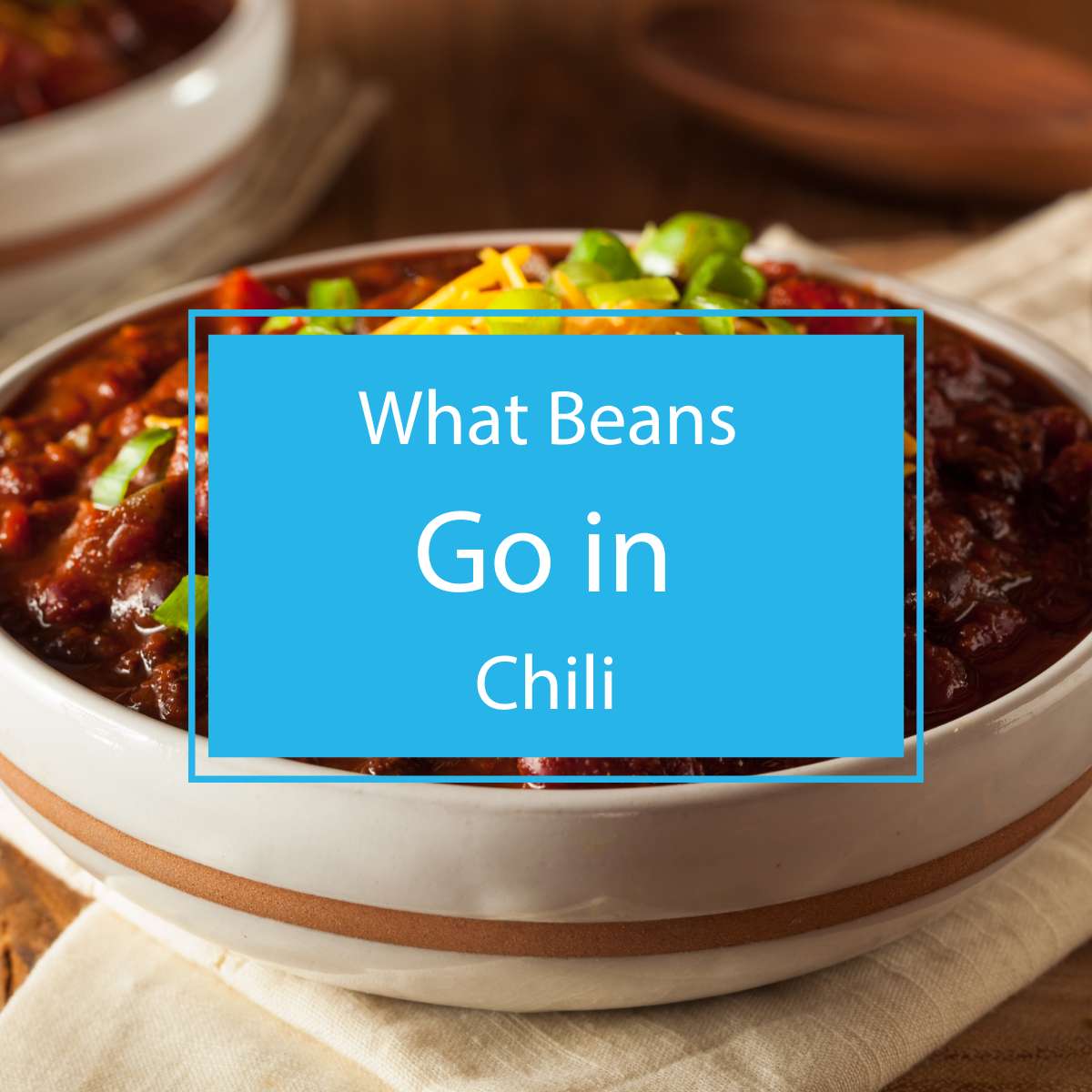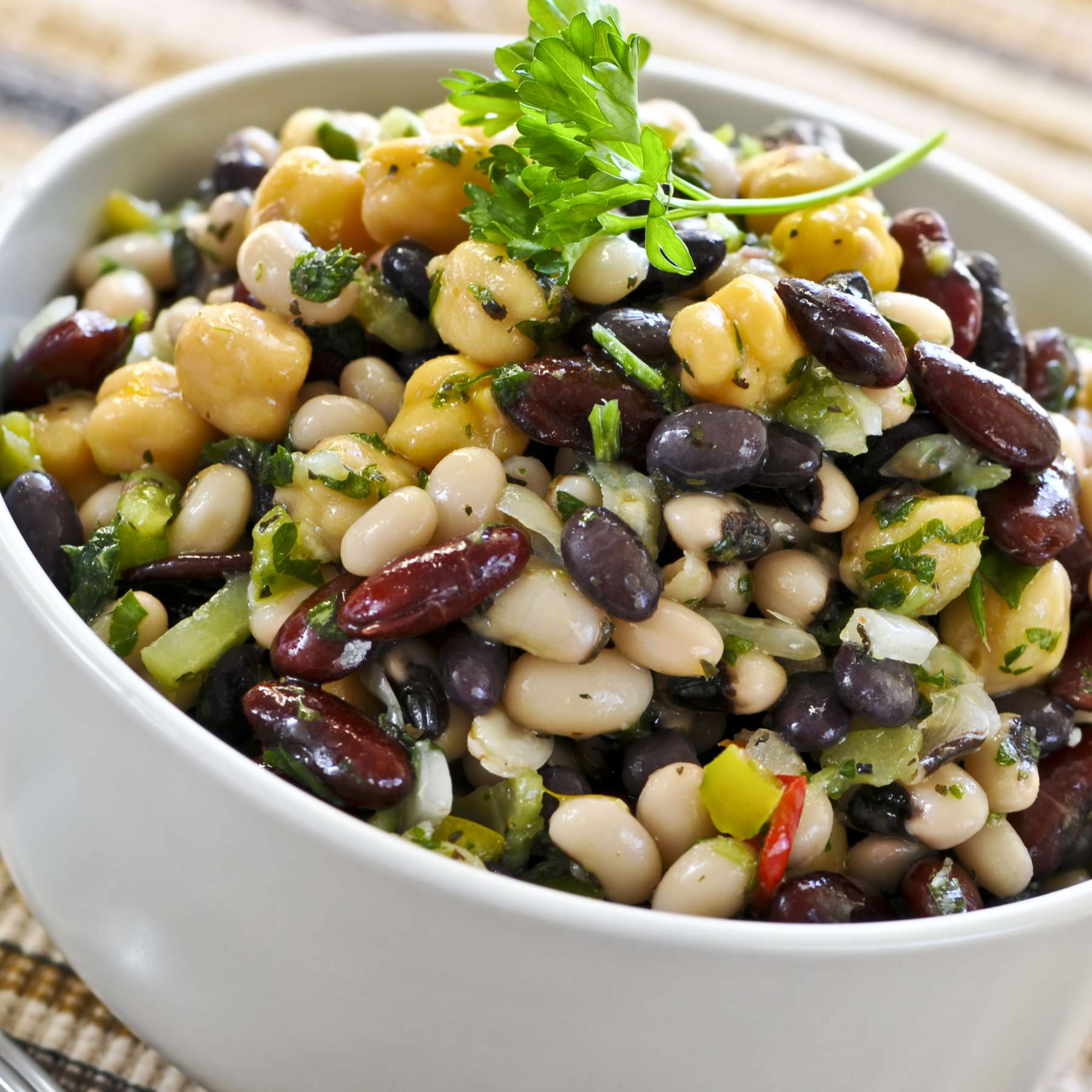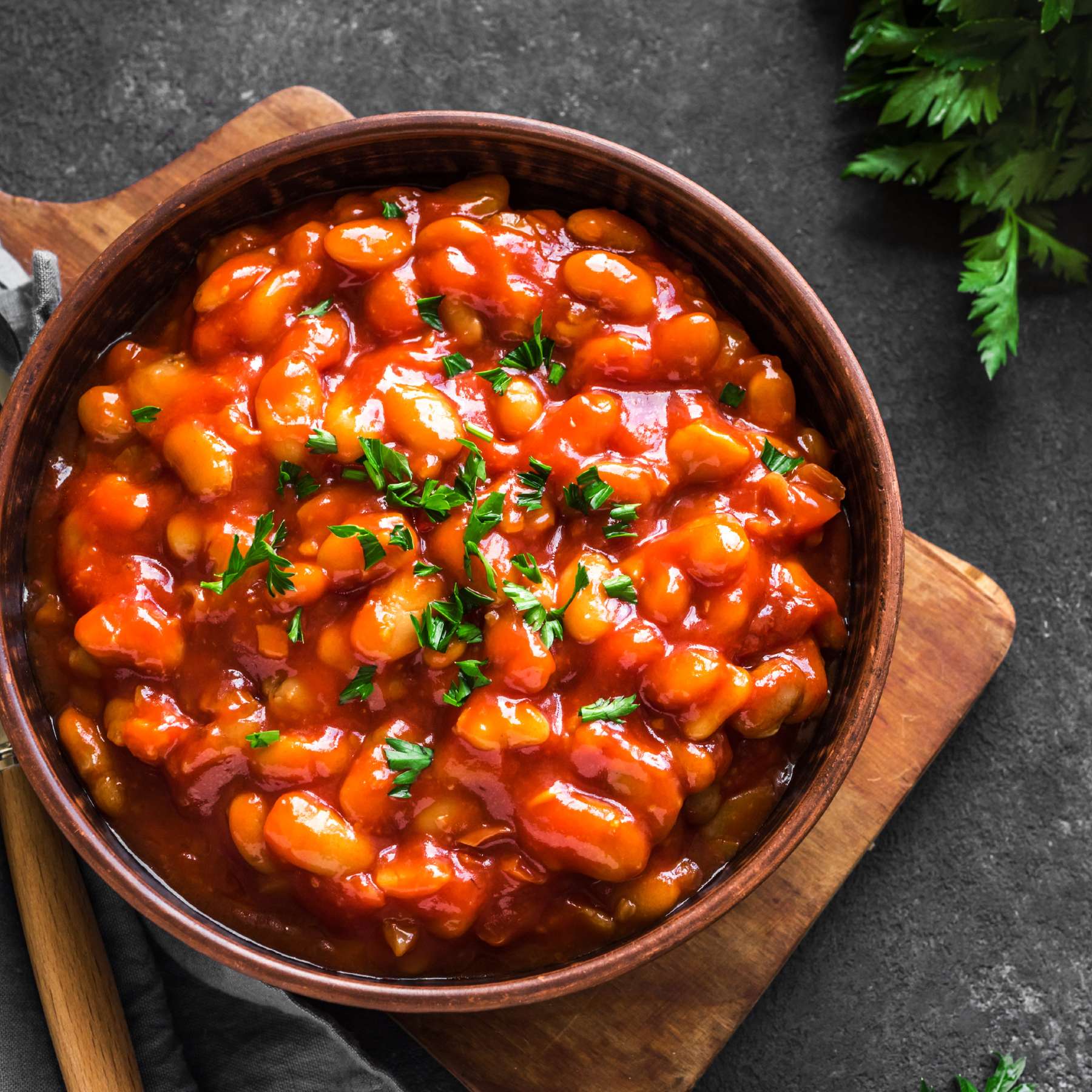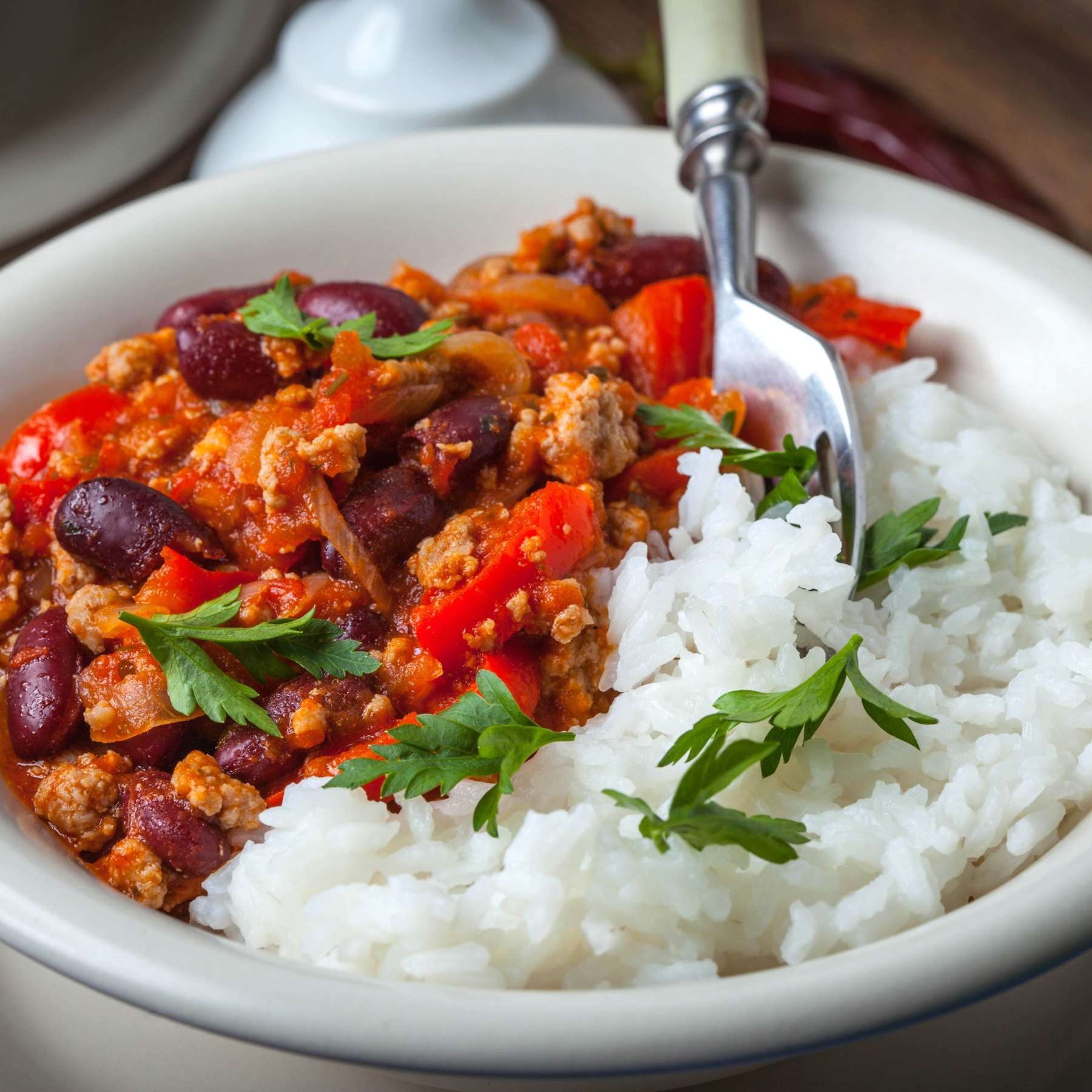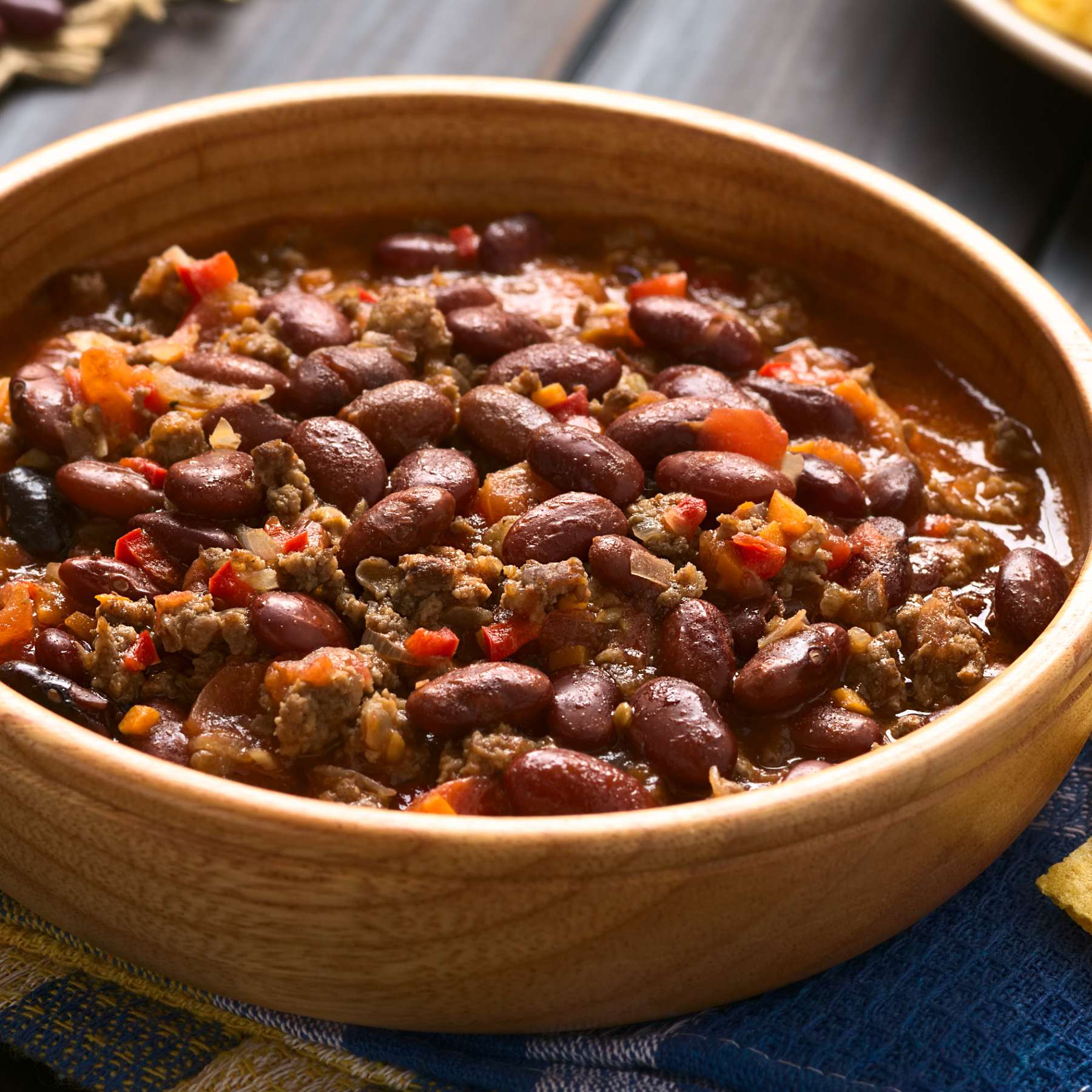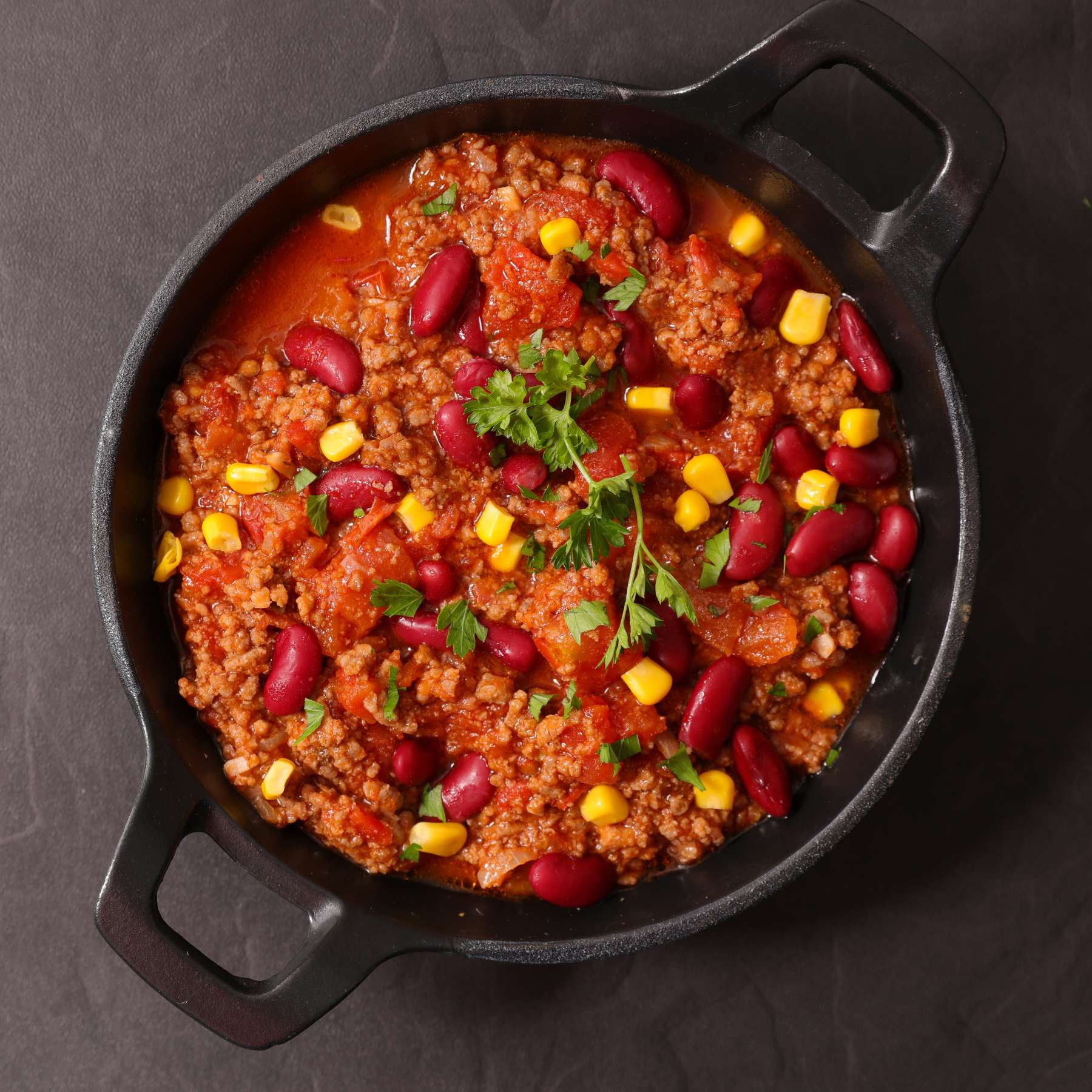Chili is not just a dish; it’s a culinary canvas waiting for your personal touch. Your adoration for traditional or innovative chili variations is about to take a new turn. Typically, a robust dish like chili incorporates a mix of meat and/or beans, spices, and vegetables, simmered to perfection.
Preparing it might involve soaking beans overnight in a Dutch oven, browning beef or turkey, and cooking with an array of spices until the flavors meld wonderfully. Cilantro, sour cream, and cheese are trendy garnishes that match the hearty nature of this comfort food.
And don’t fret if you overdo the batch, chili freezes excellently – extending its culinary joy to up to three months. As you traverse through these sections, unravel the world of beans in chili and discover how to make your next pot irresistible.
Related Article: You might also want to check out our other recipe on Roasted Frozen Green Beans, or Instant Pot Refried Beans
Key Takeaways
- Diversify your chili by experimenting with various bean varieties
- Discover the unique flavor profiles and textures of different beans in chili
- Master chili preparation techniques to bring out the best in your chosen beans
- Learn about the ongoing debate between bean purists and bean lovers in chili
- Find out how to garnish and plate your chili in an appealing way
- Try unconventional ingredients for a personalized chili twist
- Finally, celebrate National Chili Day with newfound knowledge and enthusiasm!
Unwrapping the Chili Bean Mystery
Delving into the essence of chili, you’ll find it’s more than just a dish – it’s an American staple with countless variations from coast to coast, popular on menus at chain restaurants such as Texas Roadhouse.
Most chili creators would concur that it’s a rich, thick hearty stew often graced with meat, beans, spices, and vegetables. Comparing it to soup, chili typically contains less liquid, offering a more concentrated flavor.
The conundrum for many is what beans go in chili?
There are numerous options and preferences, influenced by regional tastes and individual secret recipes that could either include or exclude beans, like this one for Puerto Rican rice and beans.
As you decipher the chili bean mystery, remember, every bean selection adds a unique taste and texture to your pot of chili. To learn more about cooking chili with different beans, some factors to consider include their flavor profile, texture, and your preferred recipe for this comforting and versatile dish.
Traditional Beans Used in Classic Chili Recipes
When diving into the world of chili, three bean varieties stand out as traditional favorites in classic recipes. Each of these beans has garnered appreciation for their unique flavors and the depth they lend to a heartwarming chili dish.
The Pinto Bean: A Staple Choice
With their earthy flavor and creamy texture, pinto beans claim the spotlight in many time-honored chili recipes. Their ability to break down when cooked gives them a smooth consistency, making them a classic staple in the chili pot.
Kidney Beans: A Hearty Contender
Kidney beans, known for their substantial size and savory taste, provide a convincing heartiness to any chili. Their meatiness makes them a satisfying option and a strong contender among other bean choices.
Black Beans: For a Modern Twist
For those seeking a modern twist, black beans offer a slightly sweet undertone and velvety feel. Their denser texture makes them an exciting alternative to add a playful touch to classic chili recipes.
Each of these cherished bean varieties brings something special to the table, creating the soulful, comforting chili experience you crave. Embrace the flavors and textures of pinto, kidney, and black beans to master your next pot of classic chili.
Bean Varieties: Exploring Your Options
Chili isn’t a one-bean-fits-all affair. The diverse bean family beckons you to explore far beyond the familiar. White chicken chili celebrates the subtle taste of white beans, while turkey chili lightens the load with lean ground turkey and a variety of beans.
For the meatless crowd, vegetarian chili shines with an abundance of beans, vegetables, and even rice. With so many beans to pick from and recipes to consider, be they classic or unconventional, your chili pot is a playground for your culinary creativity.
Each bean type brings a unique layer to your dish, ensuring that every bite is a reflection of your personal taste and penchant for experimentation.
Notable Bean Types for Chili:
- Great Northern Beans
- Navy Beans
- Cannellini Beans
- Chickpeas
- Anasazi Beans
Life is too short for boring chili. Open yourself up to the delight of discovering new bean types and recipes to spice up your culinary endeavors.
White beans, for example, feature a delicate, mild flavor that allows other chili elements to shine, especially when paired with tender chicken. Chickpeas, or garbanzo beans, add an interesting twist and satisfying texture to your dish, while cannellini beans contribute a creaminess that melds seamlessly into a rich and hearty chili rendition.
Delving into the world of bean profiles, we’ve created a helpful table to guide you in selecting the perfect bean type to achieve your desired chili variations.
| Bean Type | Flavor | Texture |
|---|---|---|
| Great Northern Beans | Mild, nutty | Firm, yet tender |
| Navy Beans | Mild, slightly sweet | Smooth, creamy |
| Cannellini Beans | Nutty, earthy | Velvety, creamy |
| Chickpeas | Mild, slightly nutty | Hearty, dense |
| Anasazi Beans | Sweet, somewhat smoky | Firm, meaty |
As you venture through the realm of chili variations, never underestimate the transformative power of a simple bean swap. Experiment with different combinations, textures, and flavor profiles to construct a chili that’s uniquely and scrumptiously your own. Happy cooking with beans!
What Beans Go in Chili: Balancing Flavor and Texture
Creating the perfect chili is an art that hinges on harmonizing a complex medley of flavors and textures. The type of bean you choose can truly make or break your dish, so it’s essential to consider both the flavor profile and texture of beans when preparing your chili masterpiece.
Let’s take a closer look at how to make the right choices when it comes to bean selection and recipe customization.
Related: If you love beans you might want to check out our other article on Puerto Rican rice and beans recipe.
Understanding Bean Flavor Profiles
Each bean variety brings its own distinct flavor profile that can accentuate or balance the taste of your chili. For instance, pinto beans are known for their mellow, smoky flavor, while kidney beans offer a bold richness to your dish.
Black beans, on the other hand, provide a subtle sweetness and a unique taste. By understanding these nuances, you can tailor your chili recipe to include the right mix of beans, spices, and main ingredients— elevating your dish to a culinary triumph.
Choosing the Right Bean Texture for Your Chili
Just as beans play a significant role in flavor, they also have a dramatic impact on the texture of your chili. Some beans, like pinto beans, provide a creamy consistency, while others, such as kidney beans, add a hearty bite that stands up to the rich sauce.
Black beans offer a soft, velvety mouthfeel that’s both comforting and intriguing. By considering the texture of your beans and how they’ll interact with the other ingredients, you can achieve the perfect chili consistency that’ll have everyone asking for seconds.
Here’s a quick reference guide to help you match the right bean texture with popular chili variations:
| Bean Type | Texture | Best Suited For |
|---|---|---|
| Pinto Beans | Creamy | Traditional beef chili, pork chili |
| Kidney Beans | Meaty bite | Thick, hearty chili recipes |
| Black Beans | Velvety softness | Vegetarian chili, chicken and turkey chili |
Ultimately, your chili creation should be a reflection of your personal taste and culinary vision. By carefully considering both the flavor profiles and bean textures, you can strike the right balance and achieve a mouthwatering bowl worthy of praise. So go ahead and experiment— the perfect chili awaits!
Debating Bean Inclusion: Chili Purists vs. Bean Lovers
As with most passionate culinary subjects, there’s an ongoing chili debate surrounding the use of beans in your bowl. Die-hard chili purists might balk at the presence of beans, while bean aficionados see them as essential for a wholesome pot.
Regional preferences play a significant role in this fiery discussion, with some areas championing specific bean varieties as the heart and soul of their local chili.
Regional Bean Preferences in Chili
Chili tastes vary across the United States, reflecting the diverse culinary landscape and local traditions. Certain regions, like the American Southwest, are known for their spicy, no-bean chili—packed with tender, slow-cooked meats.
However, head to the Midwest, and you’ll find a hearty bowl brimming with a medley of beans and ground beef. Such regional preferences influence the ingredients, creating distinct chili styles that celebrate the local culture and history.
Pros and Cons of Beanless Chili
The decision to include beans in your chili or opting for a no-bean chili often hinges on individual taste and the cherished recipes passed down through generations. Some chili aficionados argue that the absence of beans allows other flavors, like spicy peppers and smoky meats, to shine.
On the other hand, bean lovers enjoy the comforting wholesomeness and added texture that beans bring to the mix. At the end of the day, the best chili is the one that pleases your palate, no matter which side of the chili debate you stand.
Cooking Techniques: Getting the Most out of Your Beans
Whether you’re using pinto, kidney, or black beans, or opting for a less traditional choice, cooking techniques are pivotal in enhancing their inherent flavors and textures. In order to achieve a successful pot of chili, it’s essential to follow a few key steps in the chili prep process. From soaking your beans overnight to finding the perfect simmer, these culinary techniques will help elevate your chili.
To begin, proper preparation of your beans is crucial. Soaking dried beans overnight and thoroughly rinsing them ensures they cook evenly and meld with the rest of the chili ingredients.
This prevents any unpleasant surprises, like biting into a rock-hard bean during dinner. The extra care taken during this step is in line with a popular expression: patience is a virtue; in the world of cooking beans, this cannot be truer.
With your beans prepped, the next essential skill in cooking chili is the art of simmering. A low and slow simmer allows for a divine intermingling of spices, meat, and beans, producing a more coherent and robust bite. It’s important to resist the temptation to crank up the heat, as a higher temperature may lead to a more watery consistency or scorched bottom
“Patience is the secret to good chili.”
Speaking of patience, when it comes to adding canned beans, incorporating them towards the end of the cooking process preserves their texture and prevents them from becoming overly mushy. While they do not require the same preparation as dried beans, canned beans still need careful attention to yield the desired outcome.
So buckle up, engage your inner chef, and embrace these culinary techniques. By practicing patience and following the proper steps, you’ll be serving up a pot of chili with beans that are cooked to perfection.
Navigating Non-Traditional Chili Ingredients
If you’re feeling daring, venture into the realm of non-traditional ingredients to pair with your beans and give your chili a unique twist. The world of chili is not confined to beef and tomatoes. Creative home cooks are pushing boundaries by including unexpected elements such as butternut squash, sweet potatoes, and even wild game meats like elk and venison.
Innovative Combinations: Beans and Beyond
Imagine the savory magic that mushrooms or a touch of citrus zest could bring to your chili, or the depth created by adding coffee or beer. These experimental flavors encourage you to go beyond traditional chili ingredients and explore new culinary possibilities. The following table showcases some innovative combinations that can take your chili to the next level:
| Ingredient | Bean Enhancements |
|---|---|
| Butternut Squash | Complements the texture of beans and adds natural sweetness |
| Sweet Potatoes | Boosts the nutritional value of your chili while adding a hint of natural sweetness |
| Elk | Provides a lean and flavorful alternative to beef, albeit a lot more expensive! |
| Venison | Offers a bold, gamey flavor that stands up well to hearty beans and spices |
| Mushrooms | Boosts the umami factor and introduces an earthy, meaty flavor |
| Citrus Zest | Brightens the chili and adds a refreshing twist to the finished dish |
| Coffee | Deepens the flavor profile and adds a slight bitterness that balances the sweetness of some beans |
| Beer | Enhances the overall flavors and adds another layer of complexity to the chili |
Unexpected Ingredients That Compliment Beans in Chili
Alongside these contemporary ingredients, consider incorporating lesser-known bean varieties to further customize your creative chili. Whether it’s lentils, chickpeas, or cannellini beans, these unconventional chili ingredients can redefine your chili experience, making it wholly unique and delicious.
The Secret Ingredients That Transform Your Chili
Every chili master harbors a secret ingredient or two that sets their recipe apart. Whether you’re seeking to enhance the flavor of your unique chili recipes or unlock culinary secrets, these special additions can elevate your creation to new heights.
For a start, consider a dash of Worcestershire sauce. This chili secret ingredient introduces an umami depth that adds complexity to the dish. In contrast, swirling in some chocolate may sound audacious, but it lends a subtle richness that stands out among flavor enhancers.
Simmering your chili with a cinnamon stick introduces a hint of spice, blending harmoniously with the smoky essence of the beans. Alternatively, a pureed chipotle pepper can provide that extra kick of heat for those who crave a bit more firepower.
These secret touches are not just about flavor — they’re about creating an unforgettable, tailor-made chili experience that’s as unique as the cook behind it.
As you explore these and other chili secret ingredients, always remember that the magic lies in the delicate balance of flavors, textures, and spices. So, unlock your culinary creativity and let your intuition guide you in crafting a chili masterpiece.
Chili Pairings: Complementing Your Bean Choice
When planning the ultimate chili feast, selecting the perfect pairing is essential in complementing your bean choice. The right sides and toppings will elevate your chili dish from a solo flavor show to a full-fledged culinary masterpiece. Remember, your chosen beans set the stage, and the pairing possibilities are only limited by your imagination.
Ideal Sides for Different Types of Bean Chili
Identifying the ideal sides for your bean chili depends on the type of bean dish you’ve created. For some, a slice of warm cornbread is a non-negotiable partner, while for others, a simple handful of tortilla chips or a warm flour tortilla might be more preferable. The following table suggests delicious side suggestions based on the type of chili:
| Chili Type | Chili Side |
|---|---|
| Pinto Bean Chili | Cornbread |
| Kidney Bean Chili | Tortilla chips |
| Black Bean Chili | Flour tortilla |
| White Bean Chili | Crusty bread, such as this garlic bread |
Top Toppings: Accents to Beans in Your Bowl
Adding the right toppings can enhance the layers of texture and taste in your bean-based chili as well. Classic choices like cheese, sour cream, and scallions are popular options, but you can get more creative too.
Less traditional garnishes like avocado, pickled jalapeños, or fresh herbs can also add an appealing freshness to your dish. Don’t be afraid to play with different toppings to find the perfect balance for your palate.
Remember, when it comes to chili pairings, the key is to find the perfect combination that complements your bean choice and tantalizes your taste buds.
Garnishing with Care: Final Touches for Serving the Perfect Chili
Gone are the days when serving chili was merely about ladling it into bowls; now, it’s a matter of artistry. Thoughtful garnishing chili not only adds visual appeal but also enhances the flavors of the beans and other ingredients.
A classic choice might include scallions, cilantro, and cheese, yet there are numerous alternatives to explore. A diced avocado or dollop of sour cream, for instance, creates a delightful contrast in both taste and texture.
Beyond garnishes, plating techniques and chili presentation can transform your dish into an inviting and comforting meal that’s as pleasing to the eye as it is to the palate. Whether you’re accentuating bold flavors or playing up the beans’ colors, a well-presented chili becomes a genuine culinary adventure.
As you ladle your chili into a bowl, consider your serving suggestions. Think about layering the garnishes, such as adding cheese first, followed by scallions, cilantro, and a dollop of sour cream or avocado on top. This not only provides an aesthetic touch but also ensures that the garnishes stay visible, so you can enjoy their flavors and textures with each and every bite.
When your chili has simmered to perfection, garnish with care and savor the moments that make culinary adventures worth it. With a keen eye for plating and garnishing, each bowl of chili will be a visually captivating and flavorful experience, enticing those who partake to eagerly anticipate their next bite.
FAQ
What are the best beans for chili?
Popular bean choices for chili include pinto beans, kidney beans, and black beans. However, there are countless other varieties to explore, such as white beans for white chicken chili or mixed beans for vegetarian chili.
How do I choose the right beans for my chili recipe?
Consider the flavor profiles and textures of different bean varieties. Pinto beans have an earthy flavor and creamy texture, kidney beans have a savory taste and meaty bite, and black beans have a slightly sweet undertone and velvety feel.
Is it necessary to include beans in chili?
The inclusion of beans in chili is a matter of personal preference and regional traditions. Some chili purists argue that beans should not be in chili, while others consider them an essential component.
What are some traditional chili ingredients?
Core chili ingredients typically include meat (such as ground beef or turkey), beans, spices (like chili powder, cumin, and paprika), and vegetables (usually tomatoes, onions, and peppers).
Are there any non-traditional ingredients that pair well with beans in chili?
Some non-traditional ingredients that can enhance your chili include butternut squash, sweet potatoes, wild game meats, mushrooms, citrus zest, coffee, or beer. These additions can create new and exciting flavor combinations in your chili.
What are some secret ingredients that can transform my chili?
Secret ingredients can include a dash of Worcestershire sauce for umami depth, a touch of chocolate for subtle richness, a cinnamon stick for added spice, or a pureed chipotle pepper for extra heat.
What are some ideal sides and toppings for bean chili?
Classic side options include cornbread, tortilla chips, or warm flour tortillas. Popular toppings for chili with beans are cheese, sour cream, scallions, avocado, and fresh herbs like cilantro.
